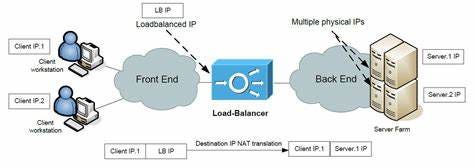Let's dissect Load Balancer,API Gateway and BFFS(Backend For Frontend)
The terms Load Balancer (LB), API Gateway, and Backend for Frontends (BFFs) represent different components in modern distributed architectures, each with distinct roles
. Load Balancer (LB)
Purpose:
Distributes incoming requests across multiple instances of services to ensure scalability, fault tolerance, and reliability.
Key Features:
Traffic Distribution: Routes requests to available backend servers based on policies like round-robin, least connections, etc.
High Availability: Ensures system uptime by routing traffic away from unhealthy servers.
Layer of Operation: Works at Layer 4 (TCP/UDP) or Layer 7 (HTTP/HTTPS).
No Business Logic: It does not understand the application context or handle advanced request transformations.
Common Use Cases:
Balancing traffic across multiple instances of a microservice.
Preventing a single point of failure in an application.
Examples:
AWS Elastic Load Balancer (ELB), NGINX, HAProxy.
2. API Gateway
Purpose:
Acts as a central entry point for all client requests and routes them to appropriate microservices, while also handling cross-cutting concerns like security, authentication, rate-limiting, and request transformation.
Key Features:
Routing: Routes API calls to specific microservices based on request paths, headers, or query parameters.
Authentication & Authorization: Validates user identity and enforces access control policies.
Request Transformation: Translates client requests into formats required by backend services.
Rate Limiting and Caching: Protects backend services by throttling requests and caching responses.
Monitoring: Provides logging and metrics to monitor API usage and performance.
Layer of Operation: Operates at Layer 7 (HTTP/HTTPS).
Common Use Cases:
Managing traffic to microservices.
Unifying APIs for internal and external consumers.
Enabling seamless integration with cloud-native architectures.
Examples:
Kong, AWS API Gateway, Apigee, Traefik.
3. Backend for Frontends (BFF)
Purpose:
Provides a tailored backend for each type of frontend application (e.g., mobile, web, IoT), optimizing the interaction between the frontend and backend services.
Key Features:
Frontend-Specific Logic: Implements logic specific to the needs of the frontend it serves.
E.g., Combine multiple microservice calls into one response to reduce the number of API calls for a mobile app.
Simplified APIs for Frontends: Abstracts the complexity of underlying microservices from frontend developers.
Fine-Tuned Performance: Optimized for the specific constraints of a frontend (e.g., bandwidth, latency).
Separation of Concerns: Ensures that each BFF handles only the needs of its corresponding frontend, reducing the scope of a generic API Gateway.
Common Use Cases:
Serving different data structures for web and mobile apps.
Reducing the number of network requests from frontends to microservices.
Encapsulating business logic specific to a single frontend.
Examples:
A separate BFF service for a mobile app that aggregates user profile and order history APIs into a single call.
When to Use What?
Load Balancer (LB):
Use when you need to distribute traffic evenly across backend services or instances.
Ideal for ensuring high availability and fault tolerance.
API Gateway:
Use when you need to manage API requests, enforce security, and handle advanced routing or transformations.
Ideal for microservices architectures where multiple APIs need to be exposed through a unified interface.
Backend for Frontends (BFF):
Use when you have multiple frontends (e.g., web, mobile) with different needs, and you want to simplify or optimize backend interactions for each.
Ideal for applications requiring tailored responses or frontend-specific optimizations.
By combining these components effectively, you can build scalable, secure, and performant systems tailored to your application's needs.
source:-wikipedia




